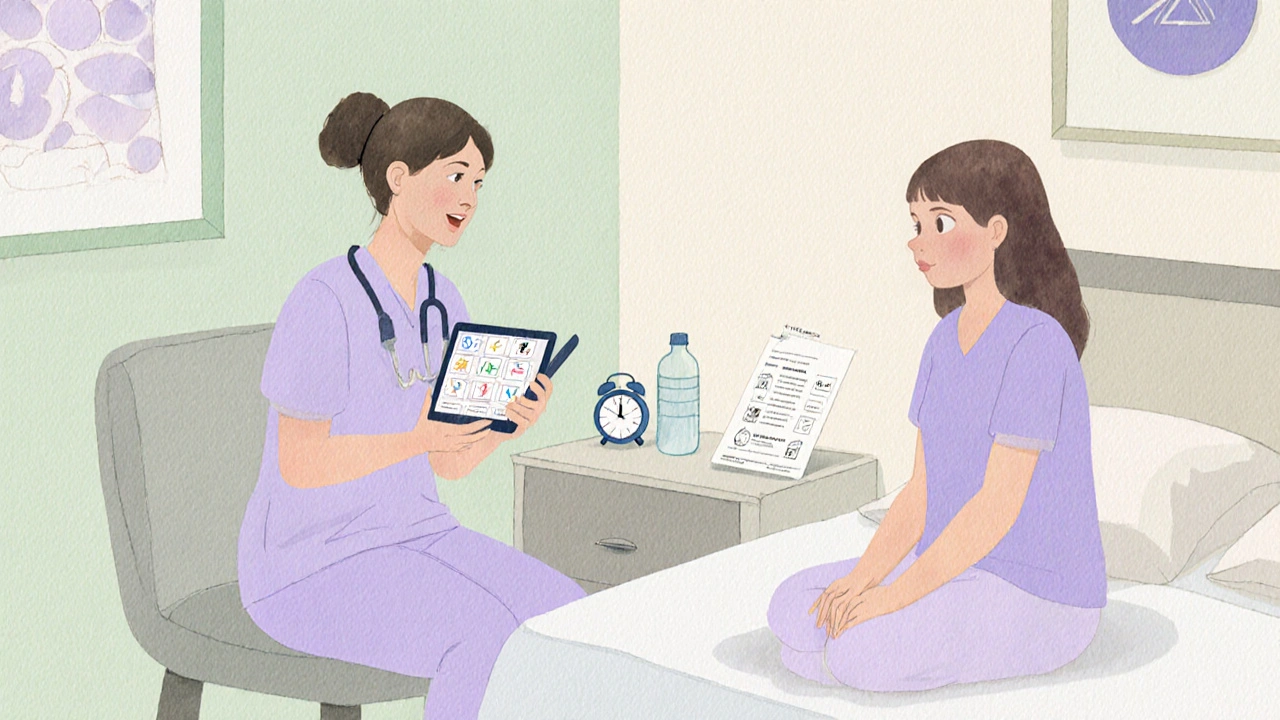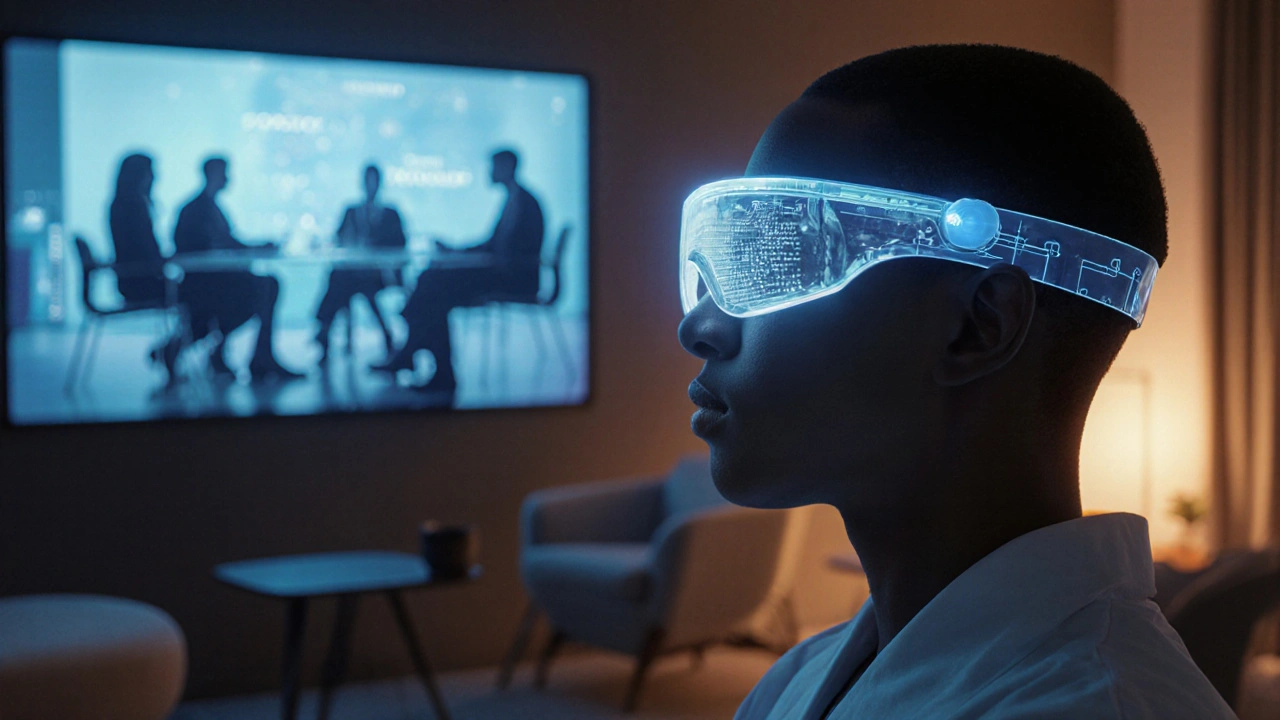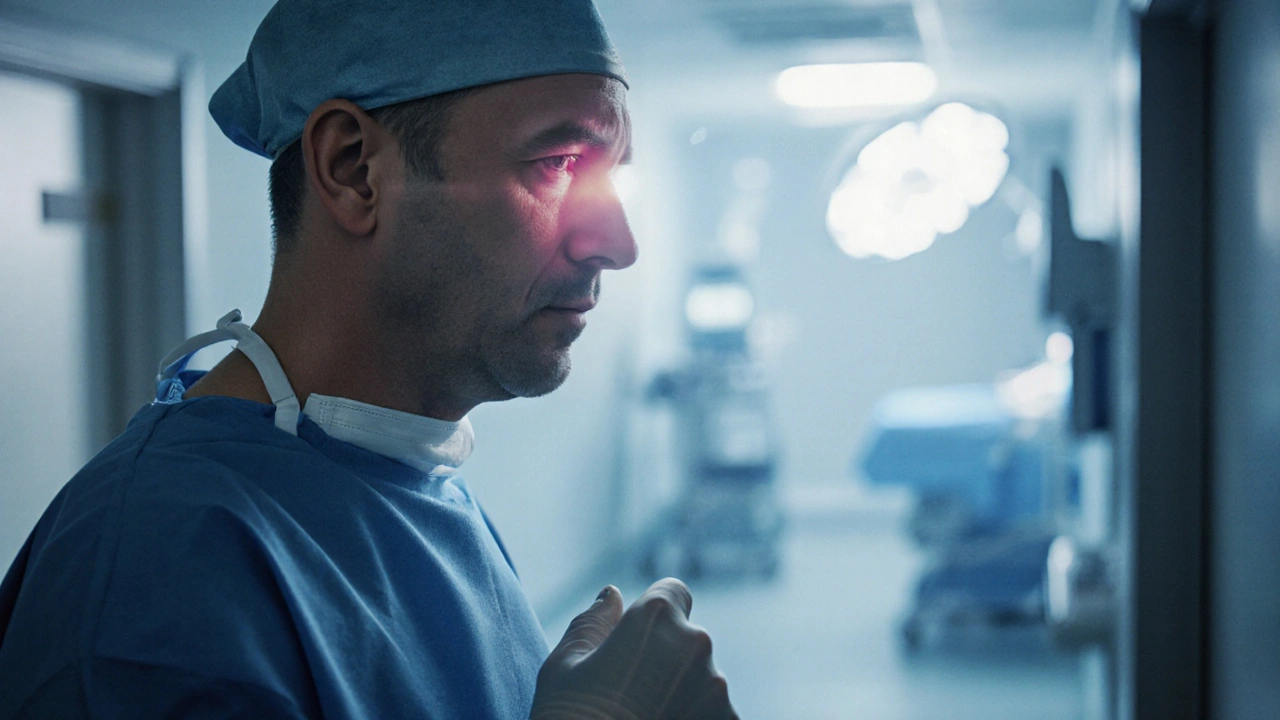Key Takeaways
- Post‑surgical eye inflammation can trigger anxiety, fear of vision loss, and temporary mood dips.
- Pain, blurred vision, and uncertain recovery timelines amplify stress.
- Early mental‑health screening and clear doctor‑patient communication cut down on psychological distress.
- Simple coping tools-education, relaxation, and support groups-show measurable benefits within weeks.
- Seek professional help if anxiety or sadness lasts beyond the typical healing period (2‑6 weeks).
Imagine walking out of the operating room after a routine cataract extraction, only to notice a hazy halo around lights and a throbbing ache. Your eyes are healing, but your mind starts racing: “Will I ever see clearly again?” That swirl of thoughts is a real, documented side‑effect of postoperative inflammation a natural tissue response after eye surgery that causes redness, swelling, and light sensitivity. While the physical signs usually subside in a few weeks, the psychological ripple can linger longer.Below we break down why inflammation hurts more than just your cornea, how to spot the mental‑health red flags, and what patients and clinicians can do right now.
Understanding Post‑Surgical Inflammation
When the eye undergoes any invasive procedure-whether cataract removal, LASIK, or retinal repair-tiny blood vessels leak, and immune cells flood the area. This cascade creates post‑operative inflammation. In most cases, ophthalmologists prescribe corticosteroid eye drops or non‑steroidal anti‑inflammatory drugs (NSAIDs) to keep swelling in check. The physical symptoms are easy to identify: redness, pain, tearing, and fluctuating visual acuity.
What’s harder to see is how those sensations interact with a patient’s sense of self‑control and future outlook.
How Inflammation Affects the Mind
Research from the International Ophthalmic Psychology Consortium (2024) shows that patients experiencing moderate to severe inflammation report a 28% increase in anxiety scores within the first week after surgery. The brain interprets visual fuzziness as a threat, activating the same stress pathways that kick in during physical danger. This triggers cortisol release, which can heighten pain perception and make the inflammation feel worse-a vicious feedback loop.
Common Emotional Responses
Below are the most frequently observed feelings, each linked to a specific trigger:
- Anxiety a heightened state of worry about visual recovery and potential complications - often spikes when patients notice blurry vision or light sensitivity.
- Fear of permanent vision loss a deep‑seated worry that the surgery may have caused lasting damage - fueled by lack of clear information.
- Depression persistent low mood, loss of interest, and hopelessness lasting beyond the typical healing window - more common in patients with a prior mental‑health history.
- Frustration and irritability - often triggered by frequent eye‑drop schedules and the need to avoid bright screens.
Factors That Worsen Psychological Stress
Not every patient reacts the same way. Six key variables tend to magnify the emotional burden:
- Pain intensity: Higher pain scores correlate with higher anxiety (Pearson r=0.46).
- Visual uncertainty: When the surgeon cannot give a clear timeline for visual stabilization, patients report more fear.
- Previous mental‑health issues: A history of anxiety or depression triples the risk of postoperative mood dips.
- Lack of support: Patients who live alone or lack a caregiver are 1.8× more likely to feel isolated.
- Medication side‑effects: Some corticosteroid eye drops can cause mood swings or mild insomnia.
- Information overload: Too much technical jargon without plain‑language explanations overwhelms patients.

Screening and Assessment: Spotting Trouble Early
Simple, validated tools can catch psychological distress before it spirals:
- Hospital Anxiety and Depression Scale (HADS) a 14‑item questionnaire that screens for both anxiety and depression - quick to administer during the first post‑op visit.
- Visual Function Questionnaire (VFQ‑25) - adds a mental‑health subscale that captures vision‑related quality‑of‑life impacts.
- Direct conversation: Ask open‑ended questions like “How are you feeling about your vision right now?”
When scores exceed the clinical threshold (≥8 on either HADS subscale), flag the patient for a brief counseling session or referral to a mental‑health professional.
Practical Strategies to Reduce Psychological Impact
Below is a quick‑reference checklist that patients can keep in their post‑op folder. Each tactic is backed by at least one peer‑reviewed study (2022‑2024).
- Education packet: Simple language explaining typical inflammation duration (usually 3‑7 days for mild cases, up to 4weeks for complex surgeries).
- Set realistic expectations: Tell patients that visual acuity may fluctuate for the first two weeks.
- Medication schedule aid: Use a phone alarm or pill‑box style eye‑drop organizer; consistency reduces anxiety about missed doses.
- Relaxation techniques: Guided breathing or 5‑minute mindfulness apps have shown a 15% reduction in reported pain.
- Support groups: Local eye‑surgery recovery clubs or online forums provide peer reassurance. Studies show participants feel 22% less isolated.
- Follow‑up call: A brief nurse check‑in 48hours after discharge drops anxiety scores by 12%.
Medication Side‑Effects and Mood
While corticosteroid eye drops topical steroids used to dampen ocular inflammation are highly effective, they can occasionally cause systemic absorption leading to mood changes, especially with high‑potency formulations. If a patient notices irritability or sleeplessness after starting drops, a clinician might:
- Switch to a lower‑potency steroid.
- Add an NSAID eye drop non‑steroidal anti‑inflammatory medication applied topically regimen to reduce the steroid dose.
- Coordinate with the patient’s primary care provider for a brief oral anti‑anxiety prescription if needed.
When to Seek Professional Help
Even with the best self‑care, some patients need deeper support. Refer to a psychologist or psychiatrist if any of the following occur:
- Persistent sadness or hopelessness lasting more than two weeks.
- Intense fear of losing vision that interferes with daily activities.
- Sleep disturbances that do not improve with relaxation techniques.
- Withdrawal from friends, family, or previously enjoyed hobbies.
Early intervention not only improves mental health but also hastens visual recovery-patients who are calmer tend to follow medication regimens more faithfully.

Quick Checklist for Patients
- Carry the printed education sheet about inflammation timeline.
- Set alarms for each eye‑drop dose.
- Note any mood changes in a simple journal.
- Schedule a 48‑hour follow‑up call with the clinic.
- Join a support group within the first week.
- Complete the HADS questionnaire at the one‑week visit.
Comparison of Common Coping Strategies
| Strategy | Typical Adoption Rate | Impact on Anxiety Score | Notes |
|---|---|---|---|
| Written education packet | 78% | ‑4 points | Best when combined with visual examples. |
| Phone call follow‑up | 65% | ‑3 points | Personal voice reduces perceived isolation. |
| Support group participation | 42% | ‑5 points | Highest effect but lower adoption; encourage early sign‑up. |
| Mindfulness app (5‑min daily) | 55% | ‑2 points | Easy to integrate, modest impact. |
| Professional counseling | 22% | ‑7 points | Most effective for severe cases. |
Future Directions in Research
Emerging work is looking at biofeedback goggles that monitor ocular surface temperature and provide calming visual feedback. Early trials (2024) suggest a 12% reduction in perceived pain, which could indirectly lessen anxiety. Additionally, integrating mental‑health screening into electronic health record prompts is being piloted in several South African ophthalmology clinics, aiming for a 30% increase in early referrals.
Frequently Asked Questions
Can normal eye‑drop use cause depression?
Topical steroids have minimal systemic absorption, but high‑potency formulas can trigger mood swings in sensitive individuals. If you notice persistent sadness, talk to your surgeon about switching to a milder steroid or adding an NSAID.
How long does postoperative inflammation usually last?
Most mild cases resolve within 3‑7 days. More extensive procedures, like combined cataract‑and‑vitrectomy surgery, can show noticeable swelling for up to 4weeks.
Is anxiety after eye surgery normal?
Yes, a short‑term anxiety spike is common because vision is a core sense. The key is whether the feeling fades as inflammation improves or stays high beyond the healing window.
What can I do right now to calm my nerves?
Try a 5‑minute breathing exercise: inhale for 4seconds, hold 4, exhale 4, repeat. Pair it with the scheduled eye‑drop time so the routine feels soothing rather than stressful.
When should I contact my surgeon about inflammation?
If redness, pain, or vision loss worsens after the first 48hours, or if you develop new symptoms like fever or discharge, call the clinic immediately. Prompt action prevents complications and eases worry.


William Dizon
October 10, 2025 AT 21:41Post‑surgery eye inflammation isn’t just a physical issue; it often spikes anxiety, especially when vision feels fuzzy. A quick mental‑health screening during the first follow‑up can flag patients who need extra support. Simple breathing exercises and clear communication about recovery timelines usually ease the stress. Encourage patients to voice their fears early so the care team can address them.
Ira Bliss
October 22, 2025 AT 11:33Seeing a halo after cataract surgery can feel scary 😟 but remember it’s usually temporary! 🌟 Keeping a journal of symptoms helps track progress and reduces uncertainty. Connecting with a support group (online or in‑person) adds a layer of reassurance. Celebrate each small improvement – even a slightly clearer view is a win! 🎉
Donny Bryant
November 3, 2025 AT 01:36Eye swelling often triggers a mood dip, so checking in on mood is key. Quick validation from the surgeon can calm the nerves.
kuldeep jangra
November 14, 2025 AT 15:40When you step out of the operating room and the world looks hazy, it’s natural for your mind to race with “What if I never see clearly again?” That immediate concern is a legitimate psychological response, not just a fleeting worry. The brain seeks patterns, and the unfamiliar visual distortion can feel like a threat to your independence. By acknowledging those fears early, you give yourself permission to process them rather than push them aside. Professional counseling, even a single session, can provide tools to manage that anxiety and prevent it from spiraling. Education about the typical healing timeline-usually two to six weeks-creates realistic expectations that cushion the emotional blow. Incorporating relaxation techniques such as guided imagery or progressive muscle relaxation can lower physiological stress markers. Support groups, especially those composed of fellow post‑operative patients, offer shared experiences that normalize your feelings. Hearing stories of successful recoveries can reinforce optimism and reduce isolation. Mindfulness practices, even just five minutes of focused breathing each day, have been shown to improve mood during recovery. Consistency in taking prescribed anti‑inflammatory drops also mitigates physical discomfort, which directly influences emotional well‑being. Regular check‑ins with your ophthalmologist, where you can ask any lingering questions, reinforce the therapeutic alliance. Documenting daily visual changes in a journal serves both as a progress tracker and a therapeutic outlet for frustration. If depressive symptoms linger beyond the typical healing window, it’s a signal to seek a mental‑health professional. Pharmacologic options, such as short‑term low‑dose antidepressants, can be considered when coping strategies fall short. Ultimately, the combination of clear medical communication, proactive coping tools, and compassionate support creates a robust safety net that safeguards both vision and morale throughout the postoperative period.
harry wheeler
November 26, 2025 AT 05:43Early screening helps catch anxiety before it snowballs